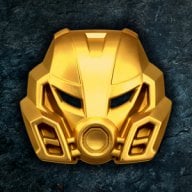First a definition for this question, because there are many kinds of sci-fi out there and they sometimes liberally use cool sounding words without explaining them:
A disruptor is a kind of weapon that weakens, or “disrupts”, either material bonds (breaking a material into molecules), molecular bonds (breaking a molecule into atoms), or atomic bonds (breaking an atomic nucleus into protons, netrons, and free electrons. Almost like instantly turning into plasma).
Temperature can do these things, but the idea behind a disruptor, specifically, is that it happens through some kind of catalyst, rather than brute-forcing with insane amounts of heat.
Would such a weapon physically be possible (even if we don’t know how to make them just yet)?
How would a target realistically behave when hit by a disruptor?


A conceivable way could be to disrupt the nuclear force of the target atoms, maybe like an anti-Pion/Gluon ray that self-propagates the reaction through the released energy.
(As we might remember, splitting the atom yields a bunch of energy, and uncontrolled such reactions go Hiroshima)
It might be controlled by sub-particle lensing, probably some kind of magnetic field, to be active at a specific distance.
For the reaction to be contained, either there’s a radially limiting component (air is not particle dense enough to propagate the reaction, or atoms not energy dense enough) or it’s a cascade triggered by the beam which stops when the beam stops (or the reaction gets too far away from it)
As I believe Pions and Gluons are their own anti-particles, I don’t know how we would go about doing this, but hey, that’s for Science!™ to solve.